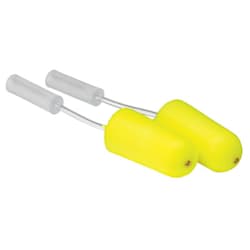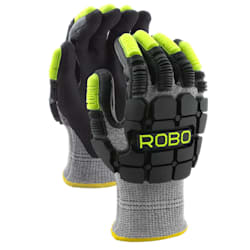Summertime PPE
The summertime season brings with it a host of new challenges when it comes to safely equipping your employees. From additional considerations due to temperature and UV levels, coupled with the urge to remove ones PPE due to discomfort or heat, the summer season can be difficult.
UV Protection
It’s vital to emphasize the importance of sunblock application. On a summer day, the UV level easily rises above 7, when a fair-skinned person could burn in under 20 minutes.
UV protection can prove a daunting task for employers. It has to be applied multiple times throughout the day, the level of protection needed can vary, and finding alternate solutions for those who cannot use it can be difficult. Frequent meetings to discuss the importance of sun protection and its proper use are instrumental in protecting employees during the summer season.
Heat Protection
Sunburn and skin cancer are not the only hazard that summertime employment can present. The intense heat can affect any person, but especially those who are not acclimated to working in the heat. If heavy machinery involved, the summer weather is only going to intensify the heat of the equipment.
Heat stroke and heat exhaustion are the two most common forms of heat related illnesses. Heat stroke occurs when the body is unable to regulate its core temperature – sweating stops and excess heat cannot leave the body. Symptoms include confusion, loss of consciousness, and seizures. This is an emergency that could result in death – so 911 should be called immediately. Heat exhaustion is the body’s reaction to dehydration and loss of salt. Symptoms include headache, nausea, dizziness, weakness, irritability, thirst, and intense sweating.
Break Time
It’s important for employers to provide fresh water and shady spaces to help prevent these heat related illnesses.
Working in hotter conditions means that more frequent breaks need to be taken. This, like sun protection application, is something that needs to be developed through team meetings to ensure productivity requirements are met while maintaining the safety of one’s employees. Employers could think workers are taking advantage of breaks, while employees could feel guilty. What is most important to remember is that nobody can work if people get a heat related illness.
Maintaining PPE Use
Compliance can be compromised during the summer season. When temperatures rise, employees are more likely to remove protective equipment due to discomfort or perspiration. Like breaks and sun protection, ensuring PPE use during summer months requires frequent discussions of PPE best practices. Providing PPE specifically designed for summer work can make this process easier. Vented hard hats, bandanas, fog-resistant eye protection, and cooling clothing can make all the difference on a hot day.




